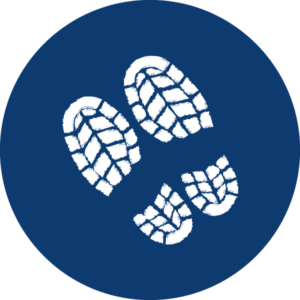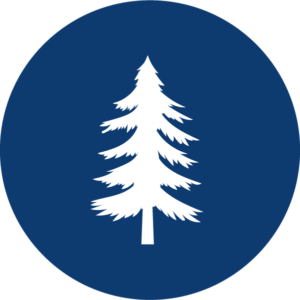
 Your Mission…
Your Mission…
To find the bay of Ellis Cove and send us a photo!
KNOW BEFORE YOU GO! Portions of this trail are steep and slippery when wet.
Priest Point Park is a 314 acre gem in the heart of Olympia. Priest Point Park is named for a small group of Catholic missionaries, the Oblate Fathers, who came to the area in 1848. They cleared the land, planted a large garden, built a chapel, and established the St. Joseph d’Olympia mission. View a short video on the history of Priest Point Park.
To access the Ellis Cove Trail, park in the main or east parking lot across from the Rose Garden Entrance. From the parking area, walk to Eastbay Drive turning left or north. The trail head is approximate 100 feet from this entrance.
![]()
 Park History
Park History
The area we call Priest Point Park has been occupied by native people for 1000’s of years. Native people journeyed by water in dugout canoes throughout the inlet fingers of Puget Sound. They fished for salmon and shellfish from the shores and lived amongst the giant, ancient trees.
In 1792, Peter Puget explored the area we call south Puget Sound and by the 1840’s, Europeans had first contact with the native people.
To see the artists rendition of Olympia through the ages visit the downtown Olympia Timberland Library (313 8th Ave SE Olympia) to see images of Sylvester’s Window.
![]()
 Logging History
Logging History
Since Peter Puget’s time, much of our shorelines have been logged to make room for colonization and development.
As you walk along the trail, you might see evidence of logging. Have you seen any old cedar stumps with trees growing from them? These are called nursery stumps. Nursery logs and stumps provide tree seedlings with a nutrient rich place to grow.
![]()
 Trees
Trees
Priest Point Park is a mixed forest with a variety of deciduous, those trees which have leaves that fall in autumn, and conifer trees, or trees with needles year-round. This is called a mixed stand forest which has more diversity and resilience than monoculture stands such as a forest plantation. See how many different tree types you can find!
Lets play I spy! I am a tall tree, with many limbs for birds to perch. Moss and plants grow on my trunk, and I have very big leaves and drop 1000’s of winged seeds. What am I?
I am a big leaf maple!
FACT! If you remove moss from a bigleaf maple trunk or limb, it takes decades to regrow.
You may also notice licorice ferns growing out of the moss on big leaf maples. In summer, the ferns dry out and appear to be dead. They become lush again once the winter rains return.
![]()
 More About Trees
More About Trees
The forest at Priest Point park has many ancient trees, mostly Western hemlock and Western red cedar. Many of these trees are up to 500 years old! One of the important habitat features of an old growth forest is dead and dying trees. These trees provide food sources for woodpeckers which help make large holes in the trees called cavities. Many birds and small mammals depend on cavities for nesting.
The forest provides homes for many wildlife species! Who do you think uses the forest as their home?
Many types of woodpeckers call the forest home; pileated, downy, and hairy woodpeckers, red breasted sapsucker and northern flicker. Have you seen any, or heard their calls, or heard the drumming sound as they search for insects?
Did you know? The thick bark of old growth trees helps protect it from fire! Trees that live in fire-prone areas develop thicker bark than those that do not.
Take a Closer Look
Along the way, scout for a manmade feature attached high up to the trunk of a tree.
What is it? A wooden carved black bear cub!
![]()
 Ellis Cove
Ellis Cove
Have you spied the waters of Ellis Cove? Ellis Creek empties into the waters of Ellis Cove and is home to migrating salmon and cutthroat trout. Ellis Creek is a short 1.1 mile lowland stream crossing under East Bay Road and flowing through dense native plant shrubs and forest.

 Ivy, Ivy Everywhere
Ivy, Ivy Everywhere
Do you know that plants such as English ivy and English holly as well as many others are invasive? This means they tend to spread out of control taking over our natural areas.
Why is ivy a problem? Ivy plants are so aggressive that they out-compete with the natural plants so much so that nothing can grow under their dense mat. Ivy on trees affects the trees health and can eventually kill the tree leaving behind nothing but ivy.
How can you help?
- Never plant invasive plants in your garden
- Never dump yard waste in natural areas
Have question about what to plant visit:
https://www.co.thurston.wa.us/tcweeds/
https://www.co.thurston.wa.us/health/ehcsg/index.html
Grow Smart Grow Safe:
https://www.growsmartgrowsafe.org/Home/Contact
You can also volunteer with Olympia parks to restore natural areas!
![]()
 Restoration
Restoration
As you follow the trail back into the forest, you can see where restoration has occurred.
How do we know what to look for? No ivy!
This area has taken many years to grow natural after the ivy was removed. Now the ground is covered with many different plants instead of just one plant, ivy. The main ground cover plant you see here is waterleaf.
![]()
 More to Explore
More to Explore
Along the trail, look for a plant that loves wet soil, grows tall with spiky thorns on its stem and produces a cone of red berries.
What is it? Devil’s club!
FACT! Bears plant Devil’s club by eating the red berries and then they spread the seeds in their droppings!

 Woodpecker Evidence
Woodpecker Evidence
Keep to the right to exit the trail as it loops back to the street.
Can you find a tree with woodpecker evidence along the way?
![]()
Congratulations!
You have completed your mission to find Ellis Cove! Don’t forget to login to the Goose Chase App and submit your photo for this mission to collect your park specific sticker!